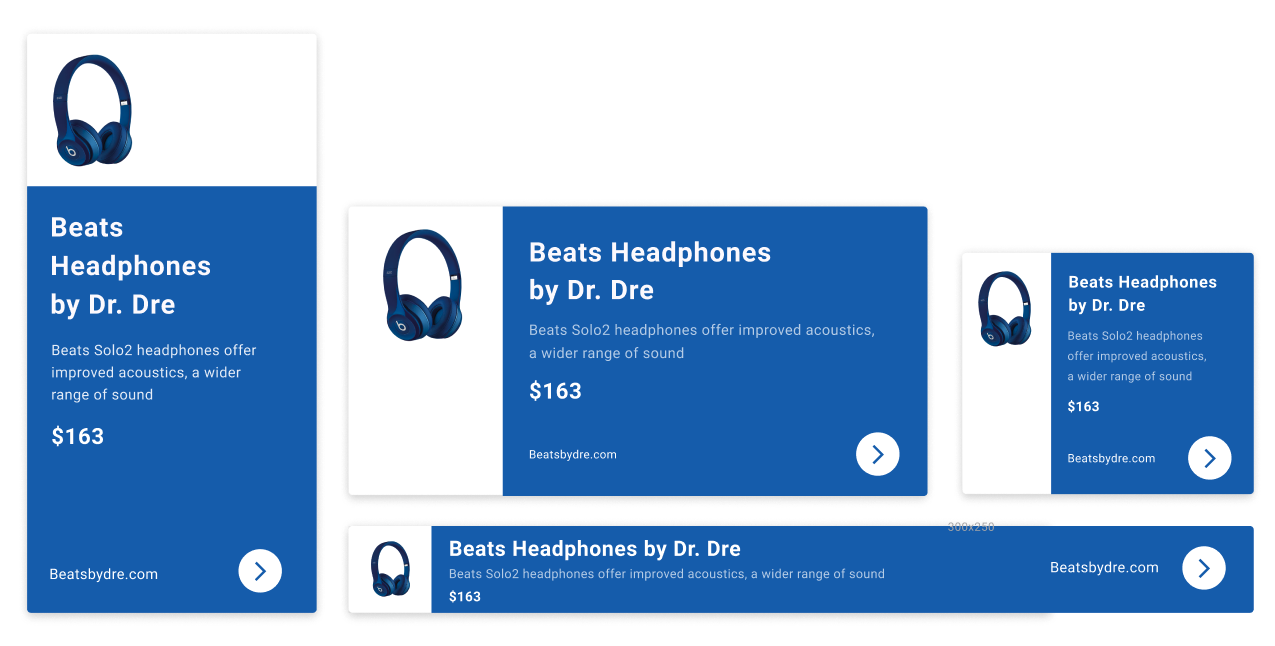Display Ad Formats
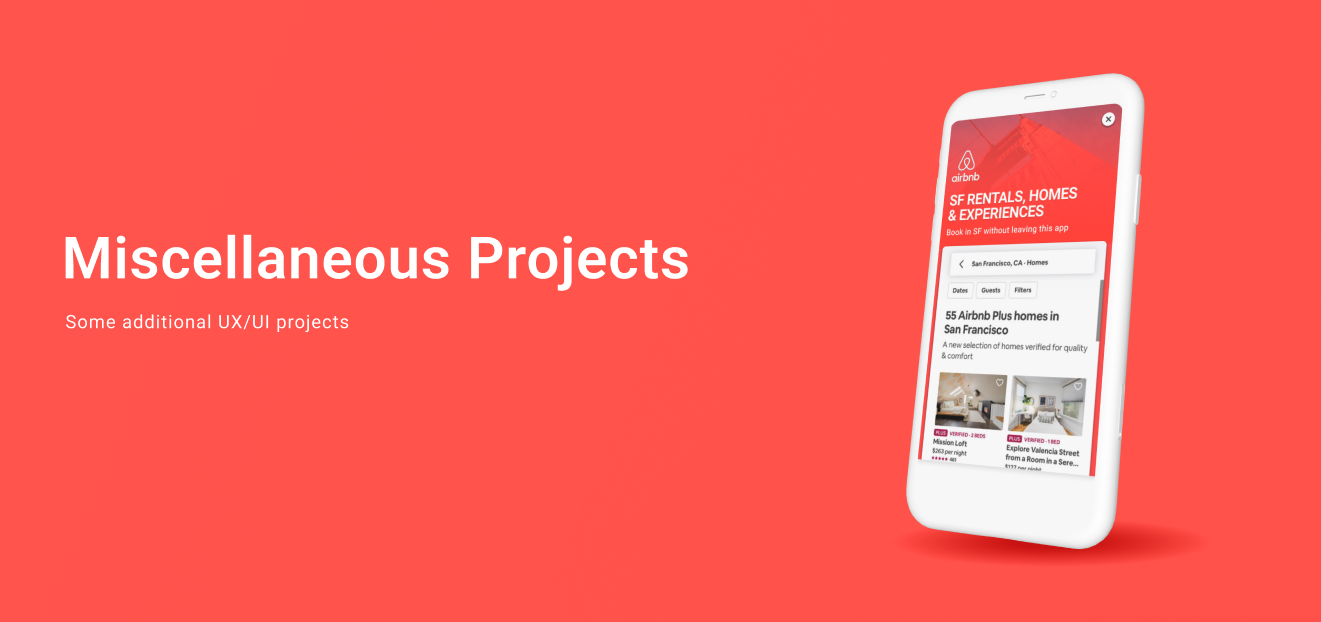
App Install ‘Poster’ Formats
These ad formats were designed to simplify the creative process for app developers and boost performance across the Google Display Network. One of the biggest friction points for advertisers was providing high-quality visual assets for their app install campaigns. To solve this, we developed auto-generated “poster” ads.
Using images already available on the Google Play Store—such as app icons, screenshots, and hero graphics—we algorithmically combined these assets into a new composite image (poster). This generated visual served as the centerpiece of a compelling, visually rich display ad format without requiring advertisers to submit custom creative.
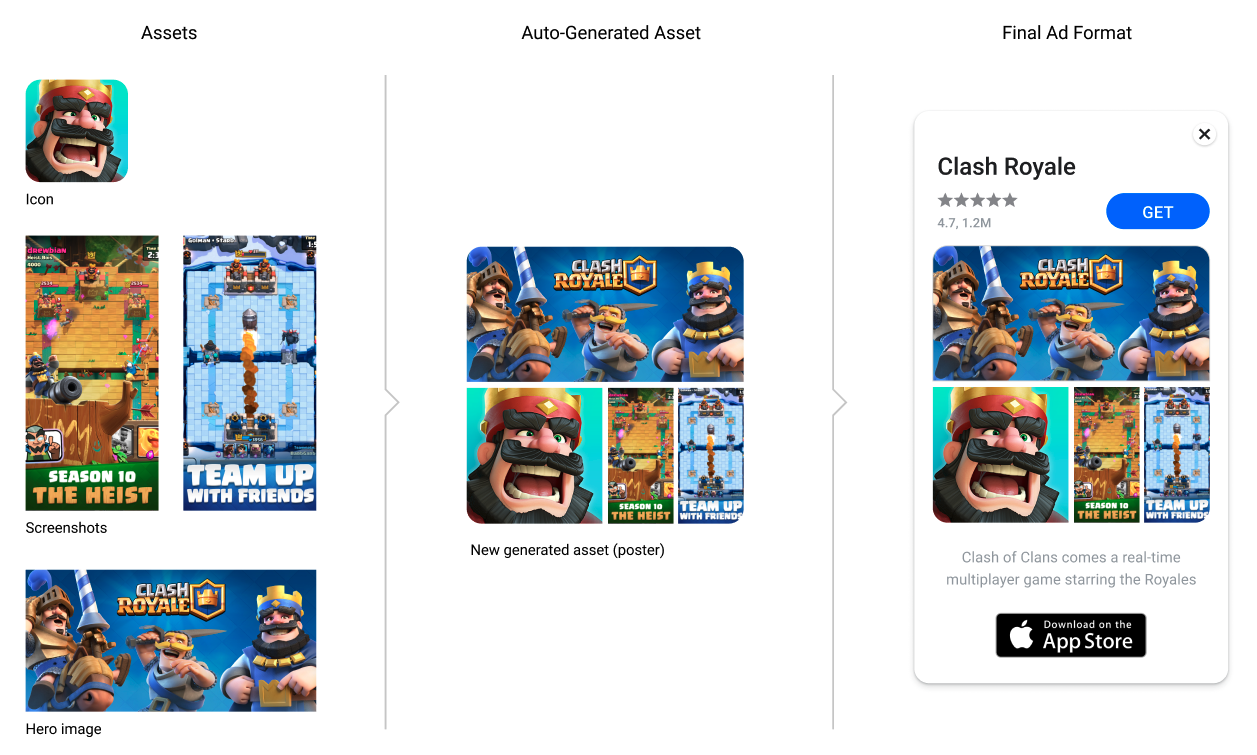
Key Highlights:
- Reduced advertiser friction by reusing existing app assets
- Delivered visually cohesive ads through automated asset generation
- Increased creative coverage across formats and screen sizes
- Maintained high-quality branding and performance without additional production effort
This system empowered more advertisers to launch high-performing app install campaigns with minimal overhead, while still maintaining strong visual storytelling.
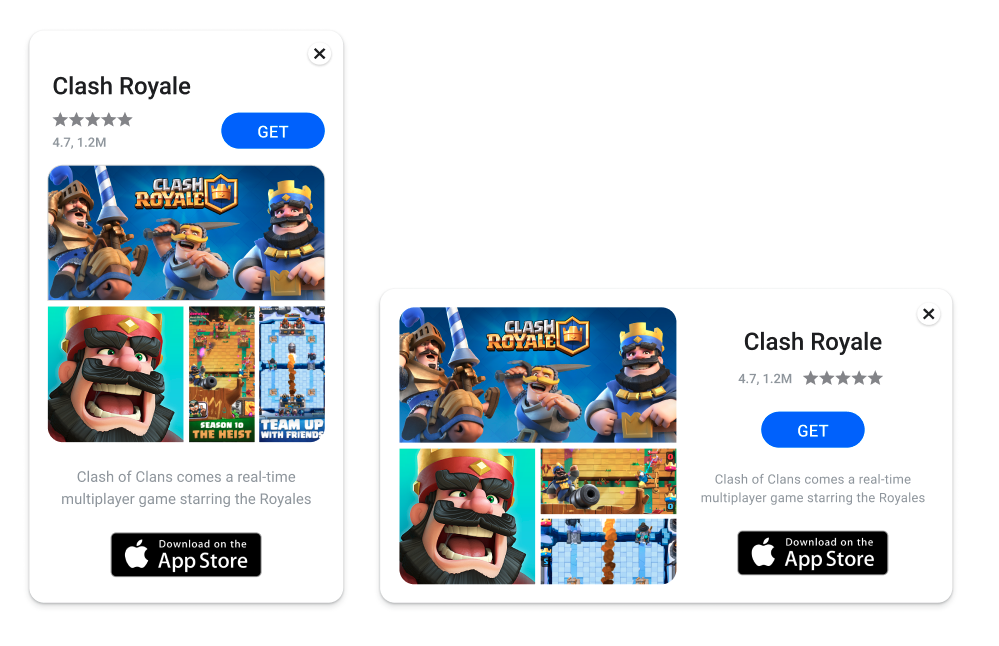
In-line Landing Page Formats
These in-app ad formats were developed to address a key user pain point in mobile advertising: the disruption caused when users are forced to leave the app and open an external browser to view an advertiser’s landing page.
To improve the user experience, we created landing page in-line ads, which render the advertiser’s landing page directly within the ad unit using an iframe. This allowed users to engage with the content—Browse menus, booking listings, or shopping products—without ever leaving the app.
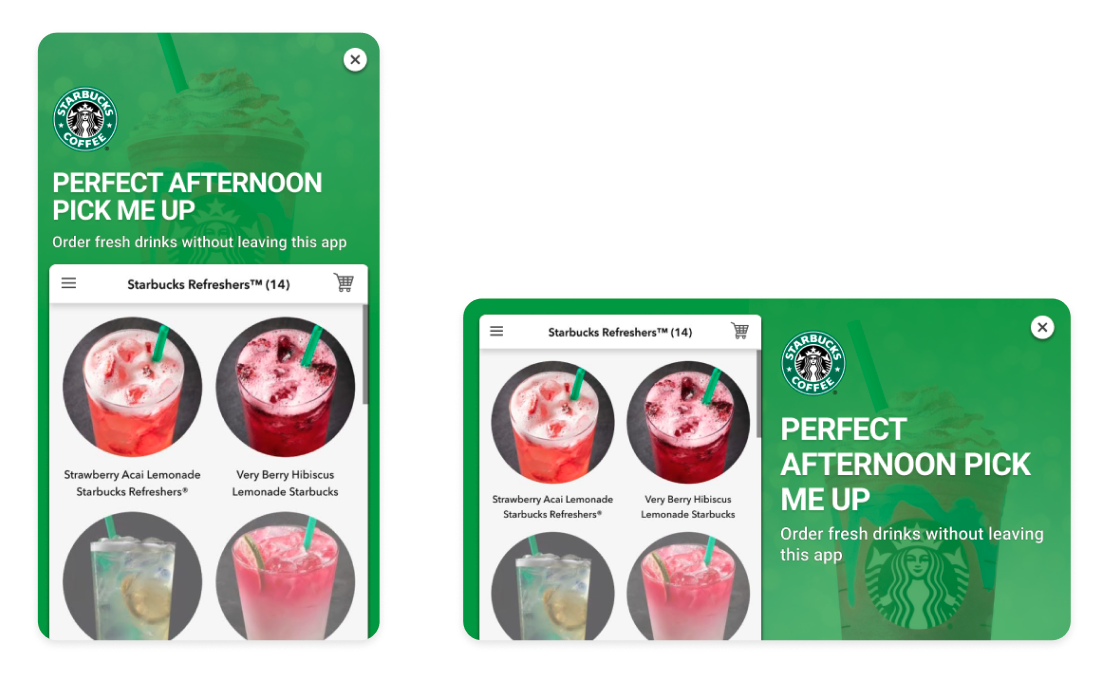
Key Benefits:
- Seamless in-app experience with no redirects to external browsers
- Higher user engagement through embedded, scrollable, interactive content
- Better performance and conversion rates for advertisers
- Faster load times and smoother transitions, reducing drop-off
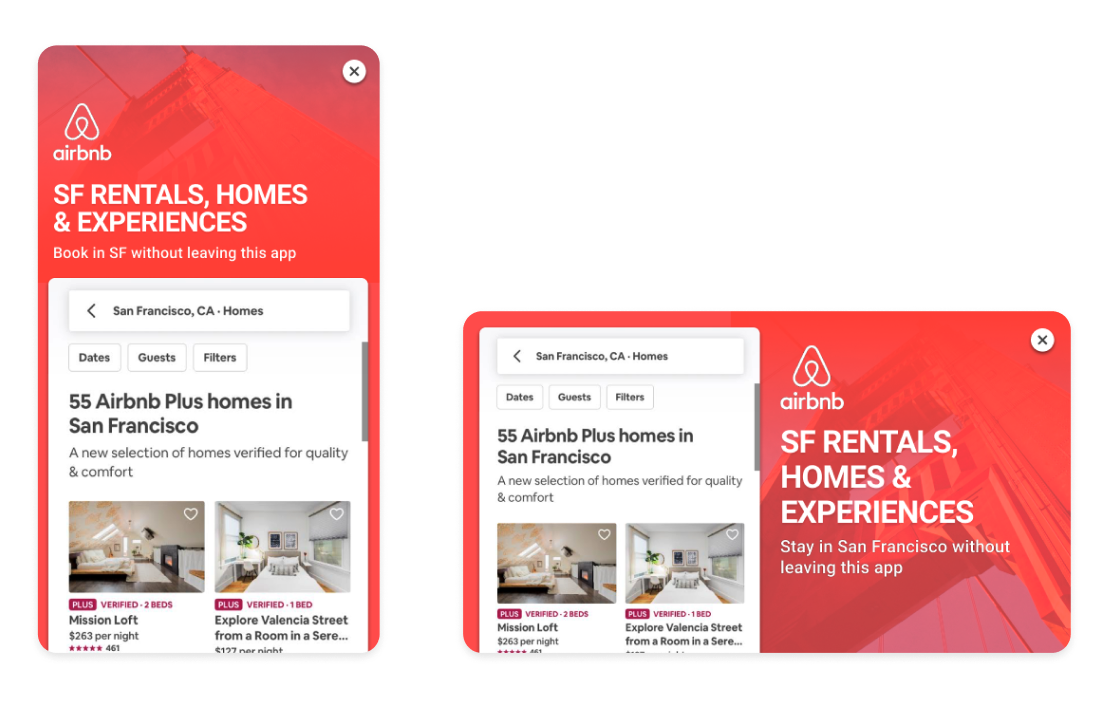
These ad formats supported a wide variety of verticals including food & beverage, travel, and retail—demonstrating how thoughtful UX and smart integration can improve both user satisfaction and ad performance.

Icon Ads
These ad formats, known as icon ads, were developed to reduce friction for app advertisers and increase creative scalability across the Google Display Network. One of the biggest challenges in running app install campaigns was collecting high-quality creative assets from developers.
To solve this, we designed a lightweight, automated solution that uses the app icon and metadata already available from the Google Play Store—including the app name, rating, install volume, and price. This allowed us to dynamically generate visually clean and consistent display ads that required no extra input from the advertiser.
Key Benefits:
- Zero asset upload required – built automatically using Play Store content
- Highly scalable ad format across millions of apps
- Lightweight, elegant, and performant across all screen sizes
- Consistent branding by leveraging official app icons and ratings
This format significantly streamlined the ad creation process while giving apps—big and small—a frictionless way to promote installs across Google’s vast display network.
Text Ads
Google Display ads are primarily visual, while "Google display text ads" as a direct format is no longer available for new creation; the current standard for both search and display is Responsive Search Ads, which can appear across the Google Network. While traditional text ads still run if they were already created, advertisers are encouraged to use responsive search ads.
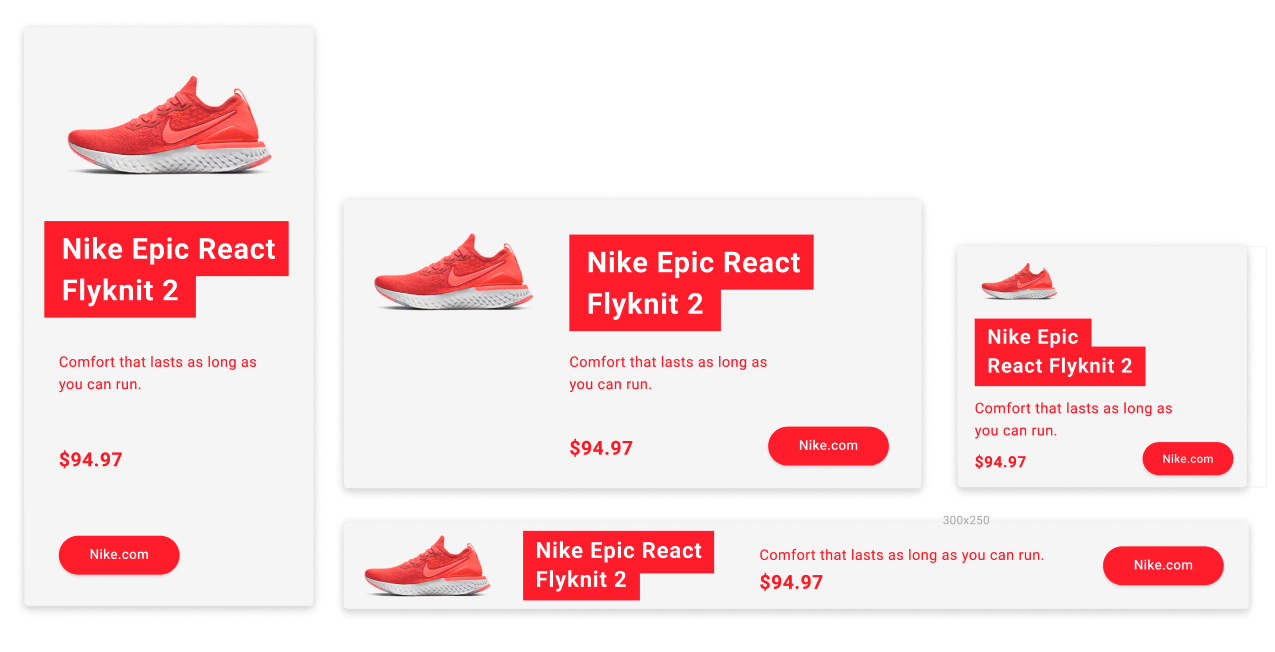
Responsive Search Ads (RSAs):
These are the current standard and can be used for both search and display campaigns. They allow you to provide multiple headlines and descriptions, which Google then combines to create ads that fit various ad formats and placements on websites and apps across the Google Display Network.
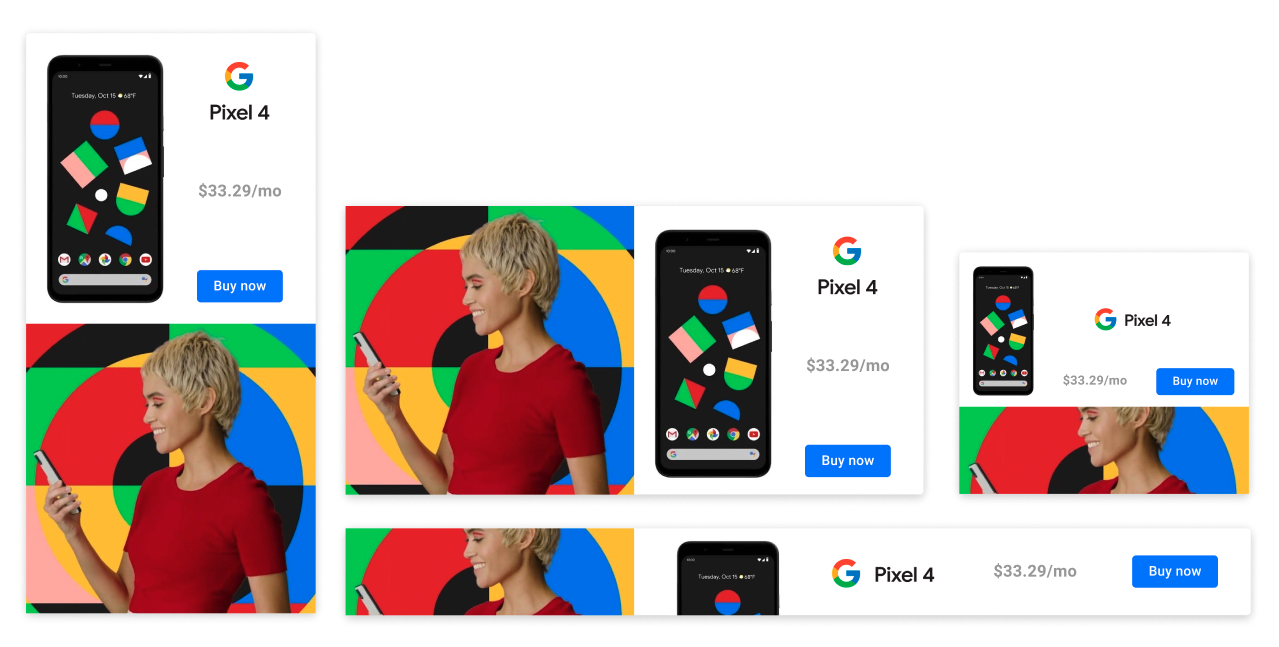
Advertisers need to provide the following assets and on Google Display Network:
- Create an RSA: Develop a set of headlines, descriptions, and other assets.
- Add a Final URL: This is the page users will land on after clicking your ad.
- Include a Call to Action: Guide users on what to do, such as "Shop now" or "Get an instant quote,"
